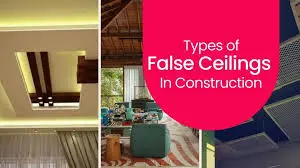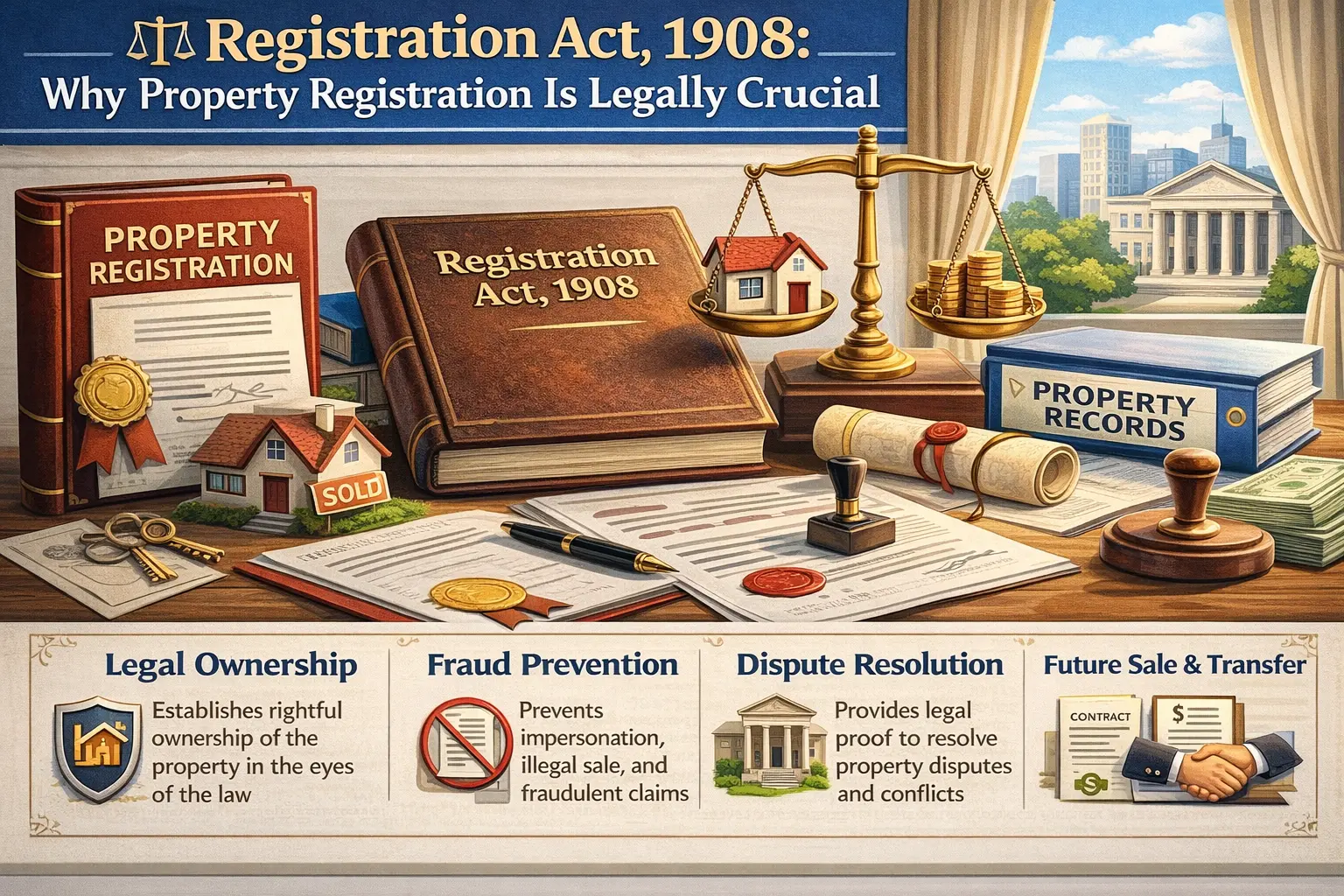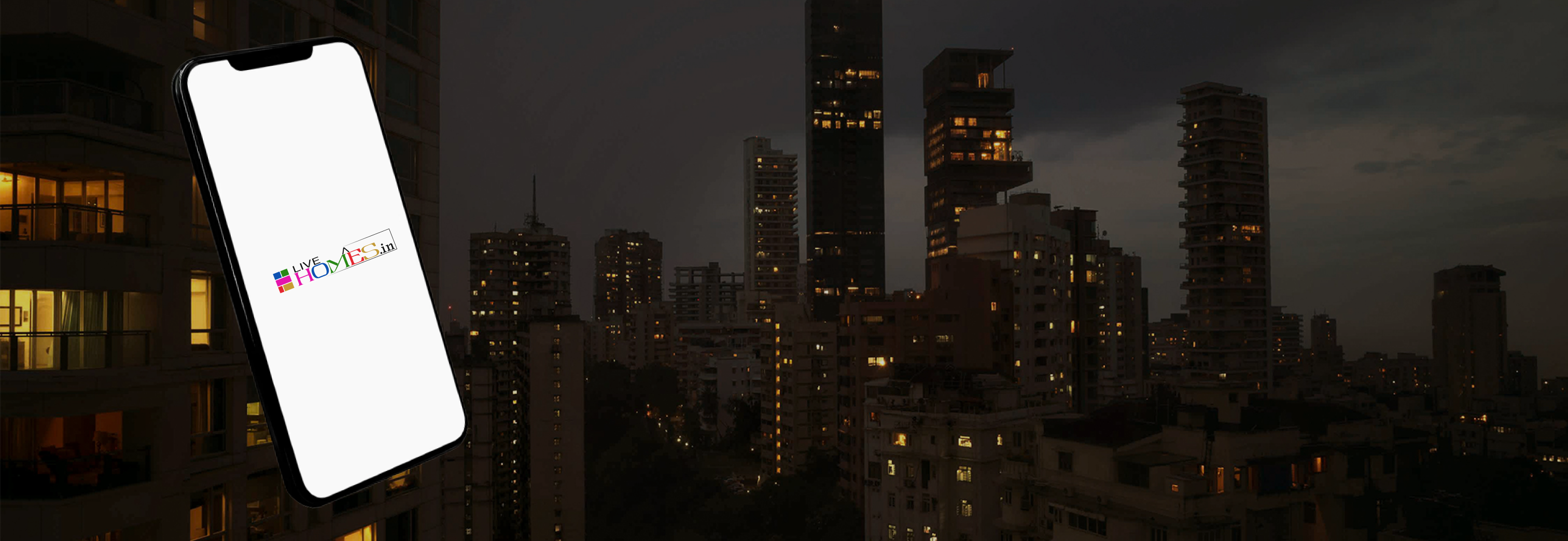A false ceiling, also called a drop ceiling, suspended ceiling, or secondary ceiling, is a layer of ceiling installed below the structural (main) ceiling. It not only enhances the aesthetic appeal of interiors but also serves multiple purposes such as concealing electrical wiring and ducts, improving acoustics, thermal insulation, and integrating modern lighting solutions. False ceiling construction can be executed using different materials and installation techniques, each with unique advantages. Below is a comprehensive breakdown of all types of false ceilings widely used in residential, commercial, and industrial buildings.
1. Gypsum Board False Ceiling
- Material: Gypsum (hydrated calcium sulfate) boards in sheet form.
- Construction Method
-A grid framework is built with galvanized iron (GI) or aluminum channels.
-Gypsum boards are screwed to the framework.
-Joints are finished with paper tape and joint compound for a seamless look.
- Advantages:
-Lightweight, smooth finish, and fire-resistant.
-Can be painted or wallpapered.
-Flexible for designs like cove lighting, stepped ceilings, or curved profiles.
- Limitations: Not fully waterproof (not suitable for very damp areas).
- Best Application: Living rooms, bedrooms, office interiors, malls.
2. Plaster of Paris (POP) False Ceiling
- Material: POP (quick-setting plaster derived from gypsum).
- Construction Method:
-POP paste is applied on fiberboard or chicken mesh fixed on a framework.
-Designed and molded as required (curves, textures, artistic patterns).
- Advantages:
-Ideal for intricate and ornamental designs (cornices, moldings).
-Seamless and smooth surface finish.
-Lightweight and easy to install.
- Limitations: Less durable compared to gypsum (may crack with time).
- Best Application: Luxury homes, heritage-style interiors, temples.
3. Metal False Ceiling
- Material: Aluminum, galvanized iron (GI), or steel panels.
- Construction Method:
-A suspension system with T-grids or channels is installed.
-Metal panels (plain or perforated) are clipped or laid into the grid.
- Advantages:
-Strong, durable, and moisture-resistant.
-Perforated options provide sound absorption.
-Easy to maintain and replace.
- Limitations: Expensive, limited in aesthetic warmth.
- Best Application: Airports, railway stations, hospitals, offices.
4. Wooden False Ceiling
- Material: Solid wood, veneer sheets, or plywood.
- Construction Method:
-Wooden panels are mounted on a framework (aluminum/wooden battens).
-Finished with polish, paint, or laminate.
- Advantages:
-Rich, warm, and elegant look.
-Good natural insulation.
- Limitations: Prone to termites, moisture damage, and higher cost.
- Best Application: Luxury residences, resorts, hotels, boardrooms.
Also Read: Types of False Ceiling in Construction
5. PVC False Ceiling
- Material: Polyvinyl Chloride (plastic panels).
- Construction Method:
-PVC panels are clipped or screwed to a lightweight framework.
- Advantages:
-Waterproof, termite-proof, corrosion-resistant.
-Lightweight, economical, and available in various colors/patterns.
-Very low maintenance.
- Limitations: Less premium appearance compared to gypsum/wood.
- Best Application: Kitchens, bathrooms, basements, shops.
6. Fabric or Cloth False Ceiling
- Material: Stretchable fabric or decorative cloth.
- Construction Method:
-Fabric is stretched across frames or suspended in soft curves.
- Advantages:
-Unique and temporary design option.
-Allos creative backlighting and thematic designs.
-Limitations: Not durable, absorbs dust, needs regular replacement.
-Best Application: Auditoriums, exhibition halls, stage decorations.
7. Glass False Ceiling
- Material: Laminated or toughened glass (clear, frosted, stained, or tinted).
- Construction Method:
-Glass sheets fixed into metal grids or supported frames.
- Advantages:
-Reflective and modern look.
-Can diffuse light beautifully (especially with LED backlighting).
- Limitations: Fragile, heavy, high cost, and requires frequent cleaning.
- Best Application: Premium homes, boutiques, showrooms, hotels.
8. Mineral Fiber / Acoustic False Ceiling
- Material: Mineral fiber tiles made from natural or synthetic fibers.
- Construction Method:
-Tiles are placed into a suspension grid system.
-
Advantages:
-Excellent sound absorption (noise reduction).
-Fire-resistant and lightweight.
-Easy to replace individual tiles.
- Limitations: Tiles may sag in high humidity.
- Best Application: Theaters, conference halls, classrooms, offices.
9. Grid (Modular Tile) False Ceiling
- Material: Square or rectangular tiles (gypsum, mineral fiber, metal, PVC).
- Construction Method:
-A T-grid framework is suspended, and tiles are placed into it.
- Advantages:
-Cost-effective and easy to maintain.
-Tiles can be replaced individually.
- Limitations: Visible grid lines reduce seamlessness.
- Best Application: Large office spaces, commercial complexes, hospitals.
10. Combination or Layered False Ceiling
- Material: Mix of gypsum, POP, wood, metal, or glass.
- Construction Method:
-Two or more materials combined for multi-layered or mixed-style ceilings.
- Advantages:
-Highly customizable and premium look.
-Perfect for integrating hidden lighting (cove lighting, spotlights).
- Limitations: Costly and requires skilled labor.
- Best Application: Luxury homes, villas, modern apartments.
Comparison of False Ceiling Types
| Type | Cost | Durability | Maintences | Best Use Case |
| Gypsum Board | Moderate | High | Easy | Homes, offices |
| POp | Low - Medium | Medium | Moderate | Ornamental Ceilings |
| Metal | High | very High | Easy | Airport, stations |
| Wooden | High | Medium | High | Premium Interiors |
| PVC | Low | High | Very Easy | Kitchen, Bathrooms |
| Fabric/Cloth | Low | Low | Difficult | Events,Halls |
| Glass | high | medium | High | Premium showrooms |
| Mineral Fiber | Medium | Nedium | Easy | Theraters, offices |
| Combinatiom | Very High | High | Moderate | Villas, Luxury homes |
Conclusion
False ceiling construction plays a major role in modern architecture and interior design. From functional types like PVC, metal, and mineral fiber (for durability and acoustics) to decorative types like POP, gypsum, and wood (for aesthetics), the choice depends on your budget, maintenance preference, and room purpose.
https://www.livehomes.in/blogs













